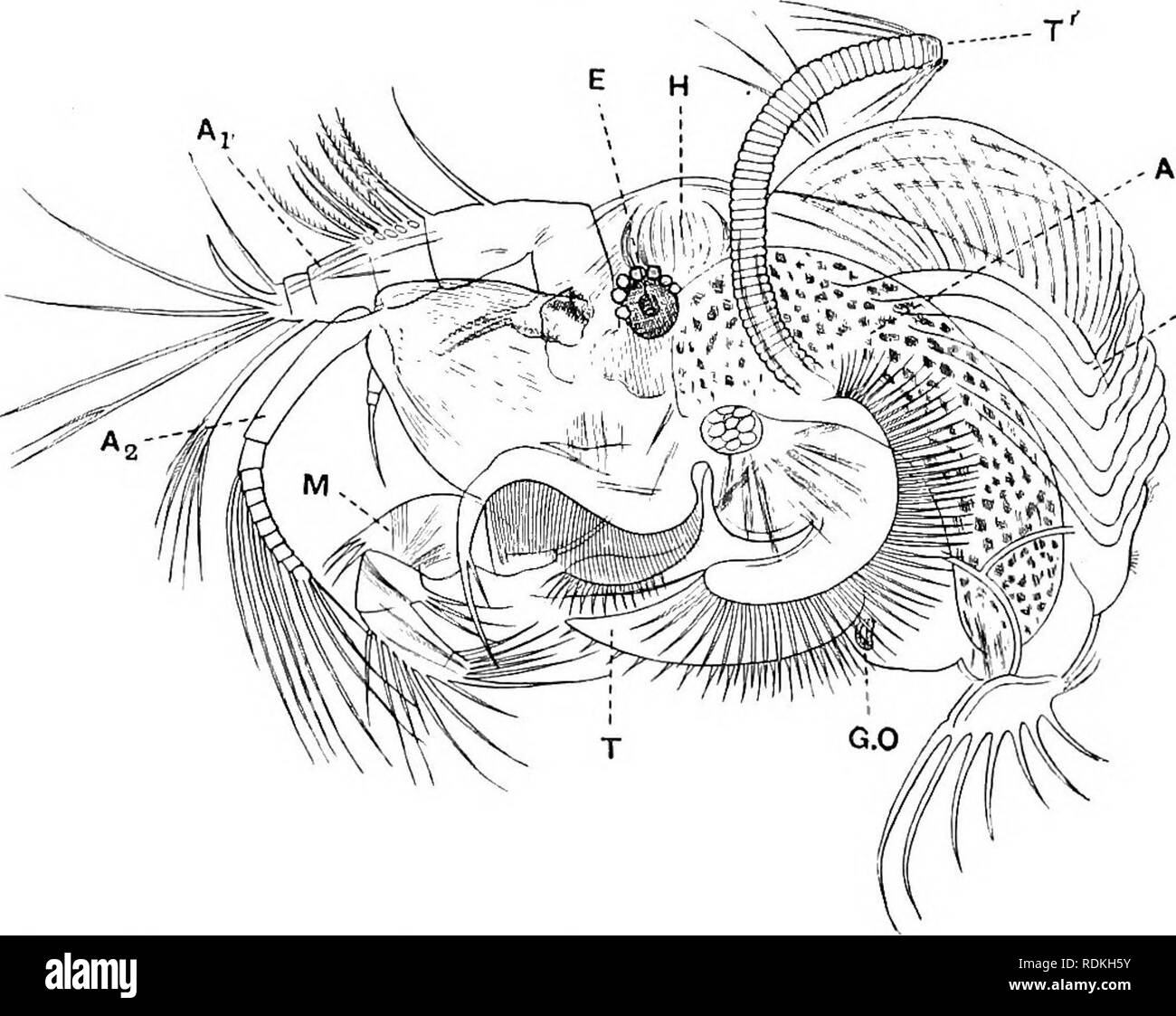. The Cambridge natural history. Zoology. io8 CRUSTACEA OSTRACODA being pediform and used in walking. The telson in the Cytlieridae is rudimentary, but is well developed in the Cypridae. The heart is altogether absent. In many of the fresh-water forms, e.g. eonmion species of Candona and Cypris, niales are never found, and parthenogenetic reproduction by the females appears to proceed uninterruptedly. Weismann ^ kept females of Cypris reptans breeding partheno- genetically for eight years. He also remarks on the fact that these, and indeed all parthenogenetic female Ostracoda, retain the recep

Image details
Contributor:
The Book Worm / Alamy Stock PhotoImage ID:
RDKH5YFile size:
7.2 MB (358.5 KB Compressed download)Releases:
Model - no | Property - noDo I need a release?Dimensions:
1773 x 1410 px | 30 x 23.9 cm | 11.8 x 9.4 inches | 150dpiMore information:
This image is a public domain image, which means either that copyright has expired in the image or the copyright holder has waived their copyright. Alamy charges you a fee for access to the high resolution copy of the image.
This image could have imperfections as it’s either historical or reportage.
. The Cambridge natural history. Zoology. io8 CRUSTACEA OSTRACODA being pediform and used in walking. The telson in the Cytlieridae is rudimentary, but is well developed in the Cypridae. The heart is altogether absent. In many of the fresh-water forms, e.g. eonmion species of Candona and Cypris, niales are never found, and parthenogenetic reproduction by the females appears to proceed uninterruptedly. Weismann ^ kept females of Cypris reptans breeding partheno- genetically for eight years. He also remarks on the fact that these, and indeed all parthenogenetic female Ostracoda, retain the receptaculum seminis, used normally for storing the spermatozoa derived from the male, unimpaired. Some of the Cytheridae occur in deep water. Thus Cytliere dictyon was frequently taken by the Challenger in depths of over 1000 fathoms, but the majority prefer shallow water. The Halocypridae and Cypridinidae comprise marine genera. Fio. 75.âAsterope oUonga, ? , remoYed from its carapace, x 25. A, Alimentary canal ; A-^, .l^, 1st and 2nd antennae ; 7i, eye ; (i, gills ; G.O, generative opening â H, heart; M, mandible; T, 6tli .appendage; T', last appendage (cleaning foot)' (After Glaus.) ° of a pelagic habit. The first antennae are chiefly sensory, but tlie second antennae are biramous, and tliey do not merely move up and down, as in the preceding families, but sideways like ' "The Germ Plasm, " Oontemp. Science Scries, 189;^, p. 345.. Please note that these images are extracted from scanned page images that may have been digitally enhanced for readability - coloration and appearance of these illustrations may not perfectly resemble the original work.. Harmer, S. F. (Sidney Frederic), Sir, 1862- ed; Shipley, A. E. (Arthur Everett), Sir, 1861-1927. ed. [London, Macmillan and Co. , Limited; New York, The Macmillan Company